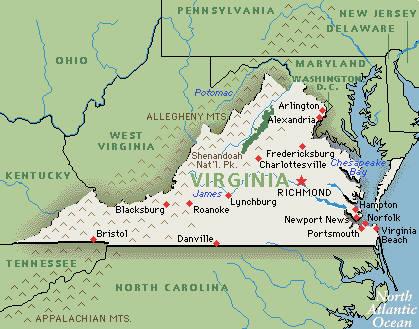 Today’s motorcycle is the result of 200 years of invention and technology. The history of motorcycles is a fascinating trip, and we’d like to share some of the highlights.
Today’s motorcycle is the result of 200 years of invention and technology. The history of motorcycles is a fascinating trip, and we’d like to share some of the highlights.
The ancestor of the motorcycle is the humble bicycle. The first bicycles in the early 1800s were made of wood, and riders literally walked them along—good exercise, but not a fast mode of transportation. Bicycles weren’t chain-driven until the late 1860s, and the first steam-powered bicycle, the velocipede, was patented in 1866.
Powering cycles with something other than human power had already occurred to some inventors, and through the 1800s, they came up with dozens of cycles with two, three, and four wheels powered by gas and steam. By the end of the century, motorized tricycles were common, but some areas enforced speed limits and other restrictions.
As with many “firsts” in technology, there is some debate about who built the first motorcycle. Inventors mentioned in the discussion include Sylvester Roper and his steam-powered bike, Michaux with a single-cylinder bike, Lucius Copeland and his three-wheeled steamer, and Daimler and Maybach with the Reitwagen, powered by an internal combustion engine.
An early motorcycle from Royal Enfield had a 239 cc front-mounted engine that powered a belt to the rear wheel. While early motorcycles tended to be two-stroke, the four-stroke engine soon replaced it. After the breakthrough combustion engine, it was possible to mass produce motorcycles, and The Hildebrand & Wolfmuller made its debut in 1894. Companies such as Triumph, Indian, and Harley-Davidson soon followed.
Once motorcycles were mass-produced, technological advances occurred regularly. Tires, engines, and transmissions continued to evolve, and the motorcycle lost the old moto-bicycle look and morphed into the design we recognize today.
Motorcycles soared in popularity during the first decade of the 20th century. By the time World War I began, motorcycle manufacturers were building thousands of bikes a year, and soldiers used them regularly during the war.
While the Great Depression affected motorcycle companies, advances and leaps in technology continued, with engines becoming larger and more powerful. Body designs were streamlined, and in the ‘40s and ‘50s, more companies entered the market, such as Honda, Kawasaki, and Yamaha.
Through the rest of the century to the present, manufacturers have focused on continuously upgrading the bike as a whole. Advances have included diesel engines, wind protection, antilock brakes, left-side gear change, and aesthetic improvements such as metallic paint and neon kits. Motorcycles are now safe, speedy, and comfortable.
As Sullivan’s Island motorcycle accident attorneys who also ride, we’re fascinated by the history of motorcycle technology. What’s your favorite point in motorcycle history?
Here’s What You Need to Know
Have you been reading this blog because you’re new to biking and not sure if it’s right for you? If so, we have a few ideas to help you get off the fence about buying a motorcycle and joining us in the exciting world of biking.
Talk to other bikers.
Don’t be afraid to walk up to bikers and ask them about their experiences. Most of them love to talk motorcycles, especially to anyone who is curious and thinking about becoming bikers themselves. Buy them a beer and ask away, and don’t forget to find out what they wish they had known about motorcycles and what they would have done differently. You want to hear the positive and the negative.
If possible, talk to someone who is approximately your height and weight and find out what kind of bike they ride and why, so you can get started on the next step.
Research different types of bikes.
If you don’t buy the right bike, you won’t want to ride it. There are several different types of bikes, and it’s well worth your time to do your research. Go to websites like Cycle Trader and Motorcycle.com to get a feel for what’s out there. Go to a dealership and sit on a few bikes to decide which handlebars you like. You can also read this post for more ideas to determine your perfect bike.
Know the traffic laws.
As motorcycle accident lawyers, we regularly talk with people who weren’t as knowledgeable as they could have been about traffic laws. Our website has a link to South Carolina motor vehicle law, and we always advise new riders to familiarize themselves with the law before riding.
Put safety first.
Do you plan to wear a helmet? How about leather? The more you can protect yourself in case of accident, the better. Remember that when you’re riding, you’ll be much smaller than a car and not easily seen. You want to assume you’re invisible to drivers, so you’ll always need to leave plenty of space between you and other vehicles. For some, this can be very stressful and cut down on the enjoyment they expected to have while riding.
Taking a motorcycle safety course is a good way to become knowledgeable about ways to help drivers see you and to keep yourself safe in traffic.
Try before you buy.
If you have a friend that’s a biker, perhaps he or she could give you a little taste of what riding is like. You could ride on the back of a bike, or maybe get a riding lesson. Try biking to see if you like it before you jump into it.
Find out how much everything will cost.
Once you’ve determined which bike you’ll need, find out how much everything will cost. Add the cost of insurance, licensing, safety equipment, clothing, and safety courses.
And finally, go with your gut. What is it telling you to do? Are you ready to ride?
Do you have any ideas for those new to motorcycles?
For spectacular scenery, Civil War historic sites, and an exhilarating yet leisurely ride, try the Blue Ridge Parkway of Virginia.
This 367-mile-long motorcycle tour runs from Afton, VA south to Cherokee, NC. The northern half runs from Afton south to I-77, and you’ll find several Civil War sites among the breathtaking, lush country you find only in Virginia. The southern half runs from I-77 to the Cherokee Indian reservation and takes you through North Carolina’s picturesque Smokey Mountains and the town of Asheville. You’ll see blowing rock and Civil War era plantation houses as you wind your way through the mountains.
The Blue Ridge Parkway has limited access for trucks and commercial traffic, and its lower speed limit (45 mph) allows you to enjoy the ride at a relaxed pace. The road is well maintained and easy to ride, with plenty of spaces to pull off and take in the scenery or camp if you choose. If you’d like to venture off the path a bit, you can ride to the town of Mt. Airy, NC, known to the world as Mayberry from “The Andy Griffith Show”.
Each half of the parkway has a service station, and while some of the small towns have lodging, the northern part of the parkway has a motel and the central area has a bed and breakfast. You’ll want to carry a map, as the parkway has very few signs to show you where the small towns are—and you’ll definitely want to explore those and experience incredible cuisine and hospitality.
No matter where you live in South Carolina, whether in Columbia, Monks Corner, or James Island, you’ll want to make the time for this incredible journey. Riders who travel the Blue Ridge Parkway (known to them as BRP) note that the area south of Asheville, NC, on the southern half of the road, is the most spectacular part of the ride. Many of them ride during the fall when the leaves are changing, and report that it’s one of most amazing rides they’ve ever taken.
Click here for more information on the Blue Ridge Parkway.
Some of my favorite rides happen right here in the Lowcountry. I love the landscapes and the relaxing atmosphere of the countryside and coastline. But there are times when I have to venture into urban areas, which has an effect on my mindset and driving. My mind is no longer clear and calm. Instead, I’m highly attentive to my surroundings and always on high alert with the hustle and bustle of big city life.
When you’re driving into the city on your motorcycle for the first time, it’s important to make a proper transition in your mindset and know primary safety tips to prevent you from being involved in a motorcycle accident.
Below are a few tips for riding in the city:
Keep your distance: One of the best ways to avoid a motorcycle accident is by keeping a safe distance from other drivers. I usually stay a good 20 – 30 feet behind any vehicle to ensure that I have enough time to stop without causing the person behind me to ram into me.
Look out ahead: I always keep my eye on the vehicles in front of me (not just the vehicle immediately in front of me). Often times, the vehicle in front of you might not see that the traffic ahead has stopped and will slam on his or her breaks. This, in turn, requires you to slam on your breaks. To prevent this from occurring, always keep an eye on the first two vehicles in front of you. If you see the first vehicle breaking, you can start to tap your break to anticipate a stop before you have to screech to a halt.
Stand out: Many motorcycle accidents occur when drivers either don’t see a motorcyclist or do not understand a motorcyclist’s right of way. To prevent this, always wear bright colors, don’t drive in a vehicle’s blind-spot (if possible), and be extremely cautious when a vehicle is in close range. If you have the right of way, don’t just assume the driver knows this. Keep an eye out, go slow, and be ready to break or swerve.
And my final piece of advice is to be aware of all your surroundings, looking out for any potential hazards or signs that another driver might not be paying attention.
If you or someone you know has been involved in a South Carolina motorcycle accident, contact the Uricchio Law Firm to speak with one of our personal injury attorneys.




